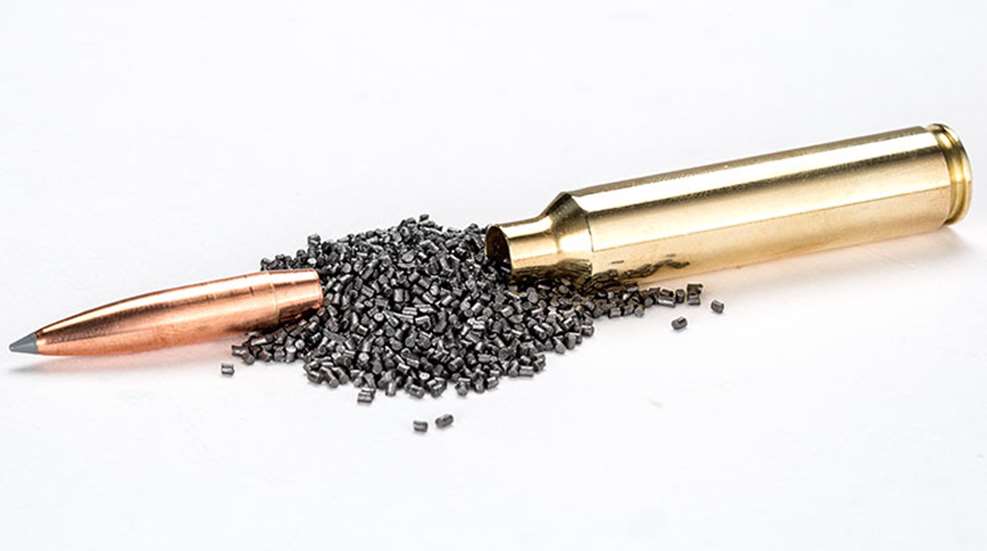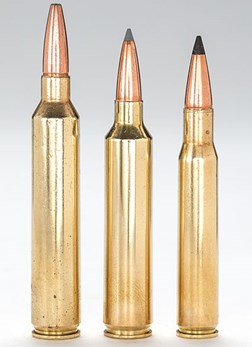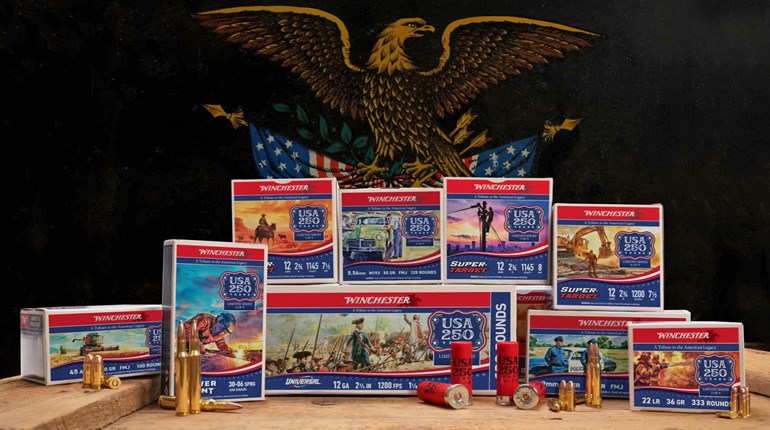
The shooting world needs the new 28 Nosler centerfire rifle cartridge like it needs another in-line muzzleloader. But real shooters and hunters know that cartridge innovation isn’t about need; it’s about perfection!
Cartridge development surrounding 7mm (.284-inch) bullets could have stopped with the 7x57mm Mauser, a do-it-all round that really has done it all, including dropping some 1,000 elephants at the capable hands of W.M. “Karamojo” Bell. Who needs anything more?
Thank goodness cartridge designers didn’t quit with the 7x57mm, or we wouldn’t have the 7mm Rem. Mag., .284 Win. or 7mm-08 Rem., to list just a few of well over a dozen 7mm rounds that have thrilled, satisfied and frustrated riflemen for more than a century.
We have 7mm centerfires that fit short actions, long actions and magnum actions. We can choose to fling bullets from 100 grains to 180 grains at velocities from 2600 fps to 3600 fps. We can choose to burn too much powder or not enough. And now we can choose to try what Nosler thinks is the ultimate 7mm magnum, arguably the fastest, most powerful .284 centerfire ever commercially sold and tenably more efficient than other magnums.
The gist of the 28 Nosler is super-magnum performance from a standard-length, non-belted cartridge. That’s right. The .28 Nosler has the same 3.340-inch maximum cartridge overall length as the .30-06, yet it generates the same muzzle velocities as the 7mm RUM. Both the .28 Nosler and 7mm RUM are rated at 65,000 psi maximum pressure, same as the .22-250 Rem. and .300 Win. Mag.
Load a 175-grain bullet atop 92 grains of Retumbo in the 7mm RUM and, according to “Nosler Reloading Guide 7,” you should get a muzzle velocity of around 3164 fps in a 26-inch barrel. Knock 10 grains off that powder charge, pour it into a .28 Nosler case, top it with the same 175-grain bullet and the velocity at the end of that same 26-inch barrel should be about 3140 fps. So the RUM burns 10 grains more powder for just 24 more feet per second. No wonder Nosler likes its chances with the 28.
Compared against the familiar, 53-year-old 7mm Rem. Mag., the .28 Nosler wins the muzzle velocity race by about 200 fps but burns roughly 18 grains more powder to do it. This suggests the “overbore” charge could be leveled at the 28 Nosler, too, but then you’d have to stick the 7mm Rem. Mag. with the same label, since it burns about 10 grains more powder than the .280 Rem. to add 200 fps to its top velocity.
 Neither this argument nor this race ever ends, so each shooter must decide what works. If you’re in it to conserve powder, get the 7x57mm Mauser. If you like more speed, power and reach, step up to the 28 Nosler and pay the price.
Neither this argument nor this race ever ends, so each shooter must decide what works. If you’re in it to conserve powder, get the 7x57mm Mauser. If you like more speed, power and reach, step up to the 28 Nosler and pay the price.
Nosler loads its factory cartridges with the 175-grain AccuBond Long Range bullet at 3125 fps, but handloads within the 65,000 psi pressure limit have yielded 3200 fps and slightly more. Pre-production rounds loaded by Nosler engineers that I test fired through a Nosler Model 48 Patriot rifle over an Oehler M83 acoustic chronograph averaged 3220 fps. Similar pre-production loads with the 160-grain AccuBond, the other bullet Nosler will offer in the 28, averaged 3311 fps. I was holding three-shot group sizes at 1.3-1.4 inches, but when Nosler technician Eric Lange took the bench, the same rifle and ammo suddenly started grouping about .5 inch. I’ve no idea how that happened. (Currently Nosler is the sole manufacturer chambering rifles for the 28 Nosler, and the company’s Model 48 is a fitting platform.)
Nosler created its new .28 by merely necking up last year’s .26 Nosler case, but that case started from the 7mm RUM case, which is itself a derivative of the .404 Jeffery, one of those fat-bodied British dangerous-game rounds from the early years of the smokeless powder era. Fat cases—and this one boasts a .550-inch body diameter just forward of the head—create powder space left to right rather than front to back. Combine the two, length and diameter, and you get what Remington did with its 7mm RUM: total water capacity of 108.1 grains. Nosler determined to stick with the width but reduce the case length to 2.590 inches and give it a sharp, 35-degree shoulder. Resulting water capacity is 100.7 grains. Resulting performance, as we’ve seen, all but matches the longer case.
Why is that? Nosler ballisticians claim barrel length has a lot to do with it. Given a 30-inch barrel, the RUM can reach the potential its powder volume implies, which is another argument in favor of the 28 Nosler. If you don’t relish packing a 30-inch barrel, the Nosler round in a 26-inch barrel seems the more reasonable option. Of course, there’s a good chance a 26-inch barrel chambered for full-house loads in the lowly 7mm Rem. Mag. could nudge its velocity to within 100 fps of the 28 Nosler.
Of this are horse races made. Regardless which thoroughbred you bet on, the 28 Nosler will be running neck-and-neck. If you want to throw a highly efficient bullet with a high ballistic coefficient far, fast and accurately, you could do worse than the 28 Nosler. But not much better.
Technical Specifications
• Caliber: .284 (7mm)
• Action Length: standard
• Factory Loads: Nosler Trophy Grade 160-gr. AccuBond; Nosler Trophy Grade 175-gr. AccuBond Long Range
• Ballistic Coefficient: .531, 160-gr. AccuBond; .672, 175-gr. AccuBond Long Range
• Muzzle Velocity (per Manufacturer): 3300 fps, 160-gr. AccuBond; 3125 fps, 175-gr. AccuBond Long Range
• Muzzle Energy: 3,883 ft.-lbs., 160-gr. AccuBond; 3,806 ft.-lbs., 175-gr. AccuBond Long Range
• Uses: deer, elk, similar-size game
• MSRP: $77.50 (per 20-rnd. box)





































